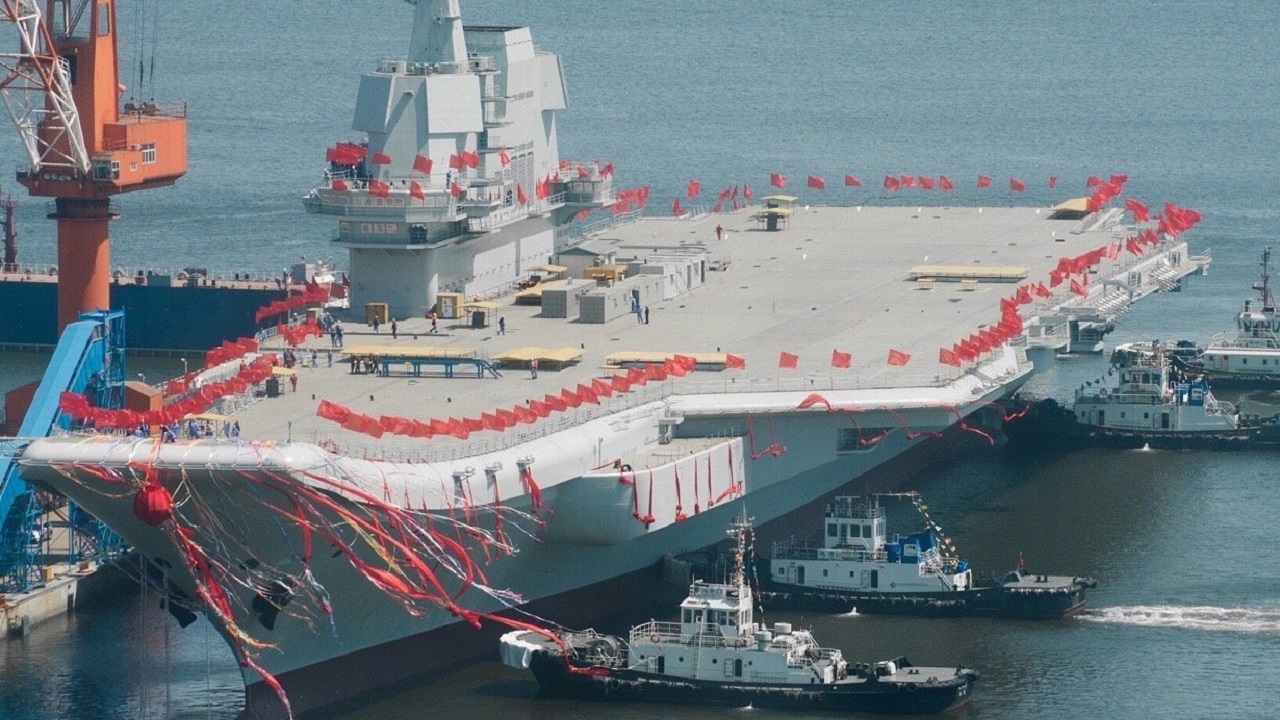Last week, the People’s Liberation Army Navy (PLAN) reached a major milestone with the launch of its third aircraft carrier. Named Fujian after the Chinese province that sits directly across from Taiwan, it is China’s largest and most powerful warship built to date. The Type 003 flattop left its drydock at a shipyard outside Shanghai on Friday.
While it won’t enter service for a few more years, when it eventually does, Fujian will be equipped with the latest weaponry and aircraft-launching technology. The warship is part of Chinese President Xi Jinping’s efforts to make the PLAN a world-class navy that can project power around the world.
Yet, as Sam Roggeveen, director of the Lowy Institute’s International Security Program in Sydney, recently wrote for Foreign Policy, “Beijing can’t challenge U.S. naval power directly yet.”
The Type 003 carrier, Roggeveen explained, is a “big improvement,” but it hardly compares to the U.S. Navy’s Nimitz-class, which is already being replaced by the even larger and more advanced Gerald R. Ford-class supercarriers.
Reaching naval parity with the United States will require another Chinese “great leap forward,” and that is where the Type 004 aircraft carrier could come into play. Though specific details on the vessel remain light, it was back in February 2018 that the Chinese State Shipbuilding Corporation (CSSC) announced that it had started development on a nuclear-powered carrier that could help the PLAN “realize its strategic transformation and combat-readiness capability in deep waters and open oceans by 2025.”
A Larger Aircraft Carrier Coming Soon?
It has also been reported that this fourth carrier would be even larger than the Type 003, and could displace between 90,000 and 100,000 tons – which would make it comparable in size to the USS Navy’s Nimitz-class as well as the new Gerald R. Ford-class carriers. Yet, it is worth noting that the U.S. Navy currently operates 10 of the former vessels, while the lead vessel of the latter is now scheduled for her maiden deployment later this year. The U.S. Navy is also on track to replace the Nimitz-class on a one-for-one basis with the newer vessels, while there have even been plans to extend the life of the aging carriers to increase the U.S. Navy’s ability to project power around the globe.
The PLAN has a lot of catching up to do, but Beijing has embarked on an aggressive naval shipbuilding program, which includes building six carrier battle groups by 2035. China had been rapidly expanding its carrier program since it acquired its first carrier, the Type 001, from Ukraine nearly 25 years ago. The former Soviet Navy aircraft cruiser was rebuilt and commissioned as the Liaoning a decade ago, and it was followed by the construction of the Type 002 Shandong, the first domestically-built Chinese carrier.
The Type 003 was the first indigenously designed and built carrier, but it will be the Type 004 that could matter most. The lead vessel could be completed by the end of the decade, while three additional vessels could quickly follow. The warships could provide Beijing with the same force projection that the U.S. Navy carriers offer, but could also be used to support any potential invasion of Taiwan – which the Chinese Communist Party maintains is a breakaway province to be brought back into the fold.
Most worrisome for the U.S. is the fact that the Type 004 has the potential to “leapfrog” current aircraft carrier technology as it could be equipped with advanced weapons including lasers and rail guns – and those programs are already being fast-tracked. Currently, only the United States and France operate nuclear-powered warships, but when China (eventually) joins that small club, it should be seen as a serious threat and a great leap forward for Beijing.
Now a Senior Editor for 1945, Peter Suciu is a Michigan-based writer who has contributed to more than four dozen magazines, newspapers and websites. He regularly writes about military hardware, firearms history, cybersecurity and international affairs. Peter is also a Contributing Writer for Forbes.

